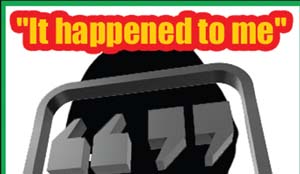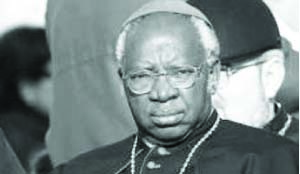 SIMON MWALE recounts his experience with a Vatican security officer on a day he and other Zambians first attended mass at the St Peter’s Square, Vatican City, outside Rome in Italy when the Pope’s event was almost marred by showers, which sent his audience scampering in all directions for shelter. Read on…
SIMON MWALE recounts his experience with a Vatican security officer on a day he and other Zambians first attended mass at the St Peter’s Square, Vatican City, outside Rome in Italy when the Pope’s event was almost marred by showers, which sent his audience scampering in all directions for shelter. Read on…
PRESIDENT Michael Sata’s recent decision to re-introduce the Industrial Development Corporation (INDECO) rekindled my memories of 1987, 27 years ago, when I was part of a group of foreign students who went to attend a five-week export promotion course at the Italian Institute of Foreign Trade in Rome, Italy.
There were five of us from Zambia, representing a number of companies from the then Indeco group of companies.
The other participants were drawn from Malawi, Tanzania, Botswana, Zimbabwe, South Africa and the host country itself, to name just a few.
We visited Italy when former Roman Catholic Archbishop Emmanuel Milingo resided at the Vatican City.
Some ingenious Zambians in my group suggested our visit to Rome would be incomplete if we did not pay a courtesy call on the renowned Archibishop.
Indeed, what better way to remember our spell in Rome by mingling with one of our own.
The Institute assisted in making arrangements for our visit to Archbishop Milingo at the Vatican City.
The Archbishop warmly welcomed us over cups of coffee and tea with cakes and biscuits.
When, however, the Archbishop’s butler announced that there were, in fact, other drinks for those with exotic tastes, my close late friend Maynard Cheelo from Mansa Batteries switched to birra (beer) from tea!)
The well-stocked cellar belied the fact that this was in the house of a man-of-God, but this wasn’t a big deal really; what mattered was the opportunity we had been given to visit St Peter’s Basilica, a stone’s throw from where the Archbishop lived.
A little history of St Peter’s Basilica will do here before I delve into my theme.
St. Peter’s Basilica is one of four Papal Basilicas or major Basilicas of Rome, the others being the Basilica of St John Lateran, Santa Maria Maggiore and St Paul outside the walls. It is the most prominent building in the Vatican City.
Its dome is a dominant feature of the skyline of Rome. Probably the largest church in Christendom, it covers an area of 2.3 hectares (5.7 acres).
One of the holiest sites of Christianity in the Catholic tradition, it is traditionally the burial site of its titular Saint Peter, who was one of the 12 apostles of Jesus and, according to Catholic tradition, also the first Bishop of Antioch and later first Bishop of Rome, the first Pope.
Although the New Testament does not mention Peter’s martyrdom in Rome, Catholic tradition, based on the writings of the Fathers of the Church, holds that his tomb is below the baldachin and altar; for this reason, many Popes have, from the early years of the Church, been buried there.
Construction of the current basilica, over the old Constantinian basilica, began on April 18, 1506.
At length on November 18, 1626, Pope Urban VIII solemnly dedicated the church.
St Peter’s Basilica is neither the Pope’s official seat nor first in rank among the Major Basilicas of Rome.
This honour is held by the Pope’s cathedral, the Archbasilica of St John Lateran which is the mother church of all churches and parishes in communion with the Roman Catholic Church.
However, St. Peter’s is most certainly the Pope’s principal church, as most Papal ceremonies take place there due to its size, proximity to the Papal residence, and location within the Vatican City walls.
The “Chair of Saint Peter” or cathedra, an ancient chair sometimes presumed to have been used by Saint Peter himself, but which was a gift from Charles the Bald and used by various popes, symbolises the continuing line of apostolic succession from Saint Peter to the present pope. It occupies an elevated position in the apse, supported symbolically by the Doctors of the Church, and enlightened symbolically by the Holy Spirit.
Crepuscular rays are regularly seen in St Peter’s Basilica at certain times each day.
After the crucifixion of Jesus in the second quarter of the 1st century AD, it is recorded in the Biblical book of the Acts of the Apostles that one of his 12 disciples, Simon known as Saint Peter, a fisherman from Galilee, took a leadership position among Jesus’ followers and was of great importance in the founding of the Christian Church.
The name Peter is “Petrus” in Latin and “Petros” in Greek, deriving from “petra” which means “stone” or “rock” in Greek.
It is believed by a long tradition that Peter, after a ministry of about 30 years, travelled to Rome and met his martyrdom there in the year 64 AD during the reign of the Roman Emperor Nero. His execution was one of the many martyrdoms of Christians following the Great Fire of Rome.
According to Origen, Peter was crucified head downwards, by his own request because he considered himself unworthy to die in the same manner as Jesus.
The crucifixion took place near an ancient Egyptian obelisk in the Circus of Nero.
The obelisk now stands in Saint Peter’s Square and is revered as a “witness” to Peter’s death. It is one of several ancient Obelisks of Rome.
According to tradition, Peter’s remains were buried just outside the Circus, on the Mons Vaticanus across the Via Cornelia from the Circus, less than 150 metres (490 ft) from his place of death.
The Via Cornelia (which may have been known by another name to the ancient Romans) was a road which ran east-to-west along the north wall of the Circus on land now covered by the southern portions of the Basilica and Saint Peter’s Square.
Peter’s grave was initially marked simply by a red rock, symbolic of his name.
A shrine was built on this site some years later. Almost three hundred years later, Old St. Peter’s Basilica was constructed over this site.
In 1939, in the reign of Pope Pius XII, 10 years of archaeological research began, under the crypt of the basilica, an area inaccessible since the 9th century.
Indeed, the area now covered by the Vatican City had been a cemetery for some years before the Circus of Nero was built.
It was a burial ground for the numerous executions in the Circus and contained many Christian burials, perhaps because for many years after the burial of Saint Peter many Christians chose to be buried near him.
The excavations revealed the remains of shrines of different periods at different levels, from Clement VIII (1594) to Callixtus II (1123) and Gregory I (590–604), built over an aedicule containing fragments of bones that were folded in a tissue with gold decorations, tinted with the precious murex purple.
Although it could not be determined with certainty that the bones were those of Peter, the rare vestments suggested a burial of great importance. On 23 December 1950, in his pre-Christmas radio broadcast to the world, Pope Pius XII announced the discovery of Saint Peter’s tomb.
Back to my theme. After visiting Archbishop Milingo, we had the chance to visit St Peter’s Square Basilica.
There, we were informed that Pope John Paul II would be emerging from the palatial architectural marvel to hold mass for hundreds of people from various stations in life from world-wide who usually throng the Square.
A visit to Archbishop Milingo was an unexpected privilege and who couldn’t relish the opportunity to listen to the Pope, a man we had read about in newspapers, magazines and other literature, seen on television, heard on radio, but had not seen or heard within earshot, in his own backyard?
It was simply a bonus we couldn’t resist or wait for. After some 20-30 minutes’ wait, the Pope would emerge from his awesome residence and strol to some vantage point to begin his mass.
Hardly 10 minutes into his delivery, the clouds had conspired to form a blackened mass and it soon began to shower with some congregants seeking shelter from near-by buildings which looked like shops with corridors.
I wasn’t far from one of these corridors myself and reckoned, like others, that taking cover from the mischievous, unceremonius showers wouldn’t exactly be a bad idea and I tried to dash into the corridor. Big mistake!
An alert security officer with a baton decided to go to work immediately.
Seeing hordes of us fleeing the Square, the officer charged at us wielding his baton menacingly and trying hard to shepherd us back onto the fast-sogging Square grounds.
I recall jumping over a hedge as I made it to the corridor when the officer came and ordered me and the others not to run away, but to get back to where Godly water was gently pouring , the Square, and listen to the Papal message.
But we resisted. Yes, the Papal message was important, but how could we enjoy it while getting socked?
The security man threatened to use his baton on us, but our resistance was resolute and we fought back in English, which I doubt he understood as he spoke Italian.
As all this happened, the question was; could this security man of God unleash his weapon of persuasion on innocent people, some of whom were not even Catholics like me?
Since language was a barrier, sign language was used and, try as he could, to persuade us to get into the rain, we could not be cowed into submission and remained in the corridors until, happily for the security man, and for us, too, the showers appeared to relent and we voluntarily went back to the square.
Short though this experience was, it taught me that the Pope is not only the venerated titular head of the Catholic church, but that divine matters must always come first before all else in our lives.
Avoiding getting soaked at the expense of the word of God from the revered Pope was certainly less beneficial than getting soaked simultaneously with the rain and with the papal message, even though some of us did not understand his language. It was a fundamental error of judgment, I thought in retrospect.
NB: Contributions to this column, the column you write, should be sent to The Editor, “It happened to me” P O Box 30394, Lusaka, email: tozletters@gmail.com or drop them at any of our Times Printpak offices.
Please note that it may take some time before articles are published; this is because they are published on a first- come- first- served basis. Don’t lose hope. Keep sending in your valuable contributions. — Editor.







